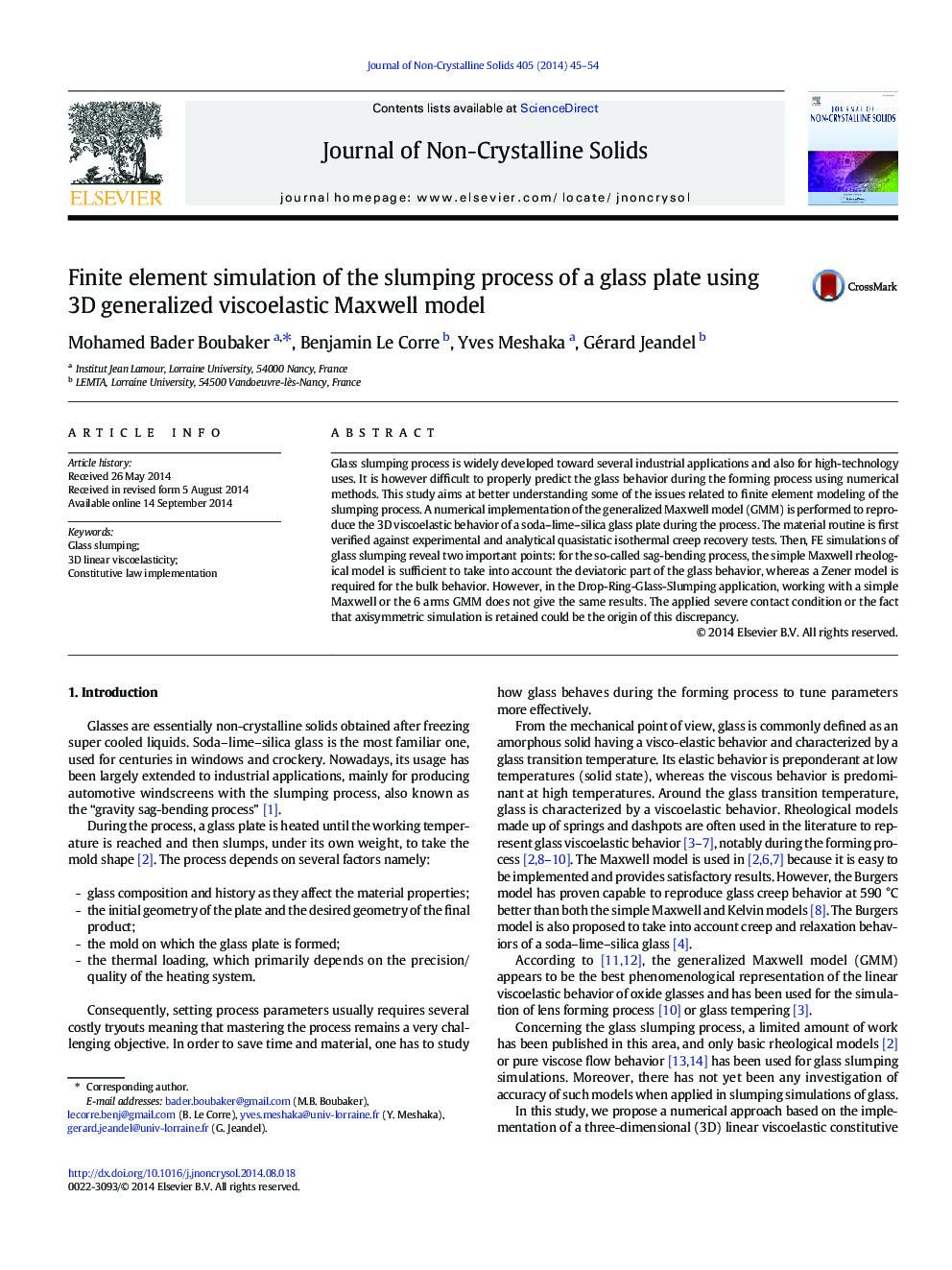| Article ID | Journal | Published Year | Pages | File Type |
|---|---|---|---|---|
| 1480970 | Journal of Non-Crystalline Solids | 2014 | 10 Pages |
•We treat some issues related to FE modeling of the glass slumping process.•We implemented a generalized Maxwell model to reproduce a 3D viscoelastic behavior.•The routine was verified against experimental and analytical quasistatic tests.•FE simulations yielded some practical findings depending on the slumping process.
Glass slumping process is widely developed toward several industrial applications and also for high-technology uses. It is however difficult to properly predict the glass behavior during the forming process using numerical methods. This study aims at better understanding some of the issues related to finite element modeling of the slumping process. A numerical implementation of the generalized Maxwell model (GMM) is performed to reproduce the 3D viscoelastic behavior of a soda–lime–silica glass plate during the process. The material routine is first verified against experimental and analytical quasistatic isothermal creep recovery tests. Then, FE simulations of glass slumping reveal two important points: for the so-called sag-bending process, the simple Maxwell rheological model is sufficient to take into account the deviatoric part of the glass behavior, whereas a Zener model is required for the bulk behavior. However, in the Drop-Ring-Glass-Slumping application, working with a simple Maxwell or the 6 arms GMM does not give the same results. The applied severe contact condition or the fact that axisymmetric simulation is retained could be the origin of this discrepancy.
